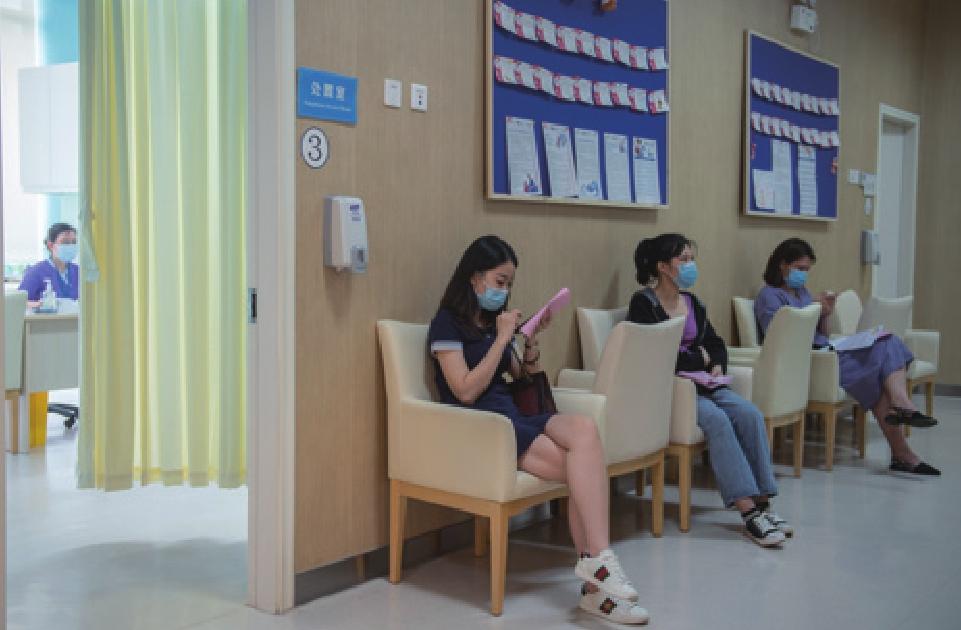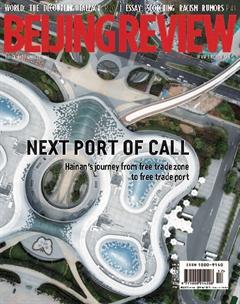PRIORITY PRACTICES
By Chi Fulin

Under the impact of the novel coronavirus pandemic, Hainan Province must give priority to opening up and institutional innovation to build itself into a free trade port with a new open economic system boasting both Chinese characteristics and international competitiveness.
Service-oriented economy
The most pressing task is to make breakthroughs in its transformation into a serviceoriented economy. The weak industrial foundation is the main stumbling block in the development of the Hainan Free Trade Port. For example, in 2019, the added value of Hainans hi-tech industry was less than one 30th of Beijings.
The key to vitalizing Hainans economy lies in promoting tourism, culture, sports, entertainment, duty-free shopping and other service industries as well as service trade. Also, producer services including logistics, processing, packaging and storage need to be advanced to foster a thriving modern tropical agriculture and a flourishing free trade port.
Human resources are essential to developing modern service and hi-tech industries. While attracting high-caliber professionals by offering them career opportunities, Hainan also needs to improve its educational conditions and medical and health services. It is necessary to introduce better medical and educational resources from other parts of China and abroad. These, coupled with Hainans well-preserved natural environment, will not only be a big draw for talents but also benefi t local residents.
Though tilting the implementation of early incentive policies such as zero tariff, low taxes and a streamlined tax system in favor of demonstration zones is important, these parks have a limited role in boosting development in Hainan, unlike in more developed regions such as Shanghai. And these early incentive policies should be made not only to benefi t these parks but also key industries in the province.
Favorable environment
To break new ground in cultivation of new growth drivers, Hainan needs to facilitate the flow of goods and production factors, devise rules encouraging further opening up, and push forward reform across the board. In particular, with global economic and trade rules being reconstructed rapidly and complex changes occurring in the world economic pattern, it is imperative to make institutional arrangements for unfolding internationally competitive opening-up policies. In this process, Hainan can become a new frontier for the country to integrate deeper into the global economic system.

To make such things happen, Hainan should be granted more policy-making authority. For example, it has been 10 years since it launched duty-free shopping but the policys benefits have not yet been fully reaped due to limitation in the fiscal and tax system, which does not meet the need of building an international tourism and consumption center with global influence.
Policymakers should learn from the operation and management models and institutional arrangements in leading free trade ports. At the same time, Hainan should be authorized to formulate free trade port regulations and the Hainan Free Trade Port Law should be published as soon as possible.
Rules and institutions for further opening up are needed to stimulate market vitality. The main reason for Hainans relatively weak economic strength is the lack of market vitality. To speed up the development of the free trade port, the province must nurture competitive market players. It is necessary to come up with new policies on opening up and taxation within the framework of a free trade port to stimulate market vitality and create a better business environment.
Hainan should significantly streamline the administrative review process and improve the governments efficiency.
New impetus
Chinas huge 1.4 billion market of domestic demand can become a new driving force for Hainans economic growth. Under the current circumstances, where epidemic prevention and control are as important as economic growth, it needs to adopt a two-pronged approach.
The first is to develop the health industry. Given that the novel coronavirus epidemic has hit the tourism industry hard, Hainan should focus on building a premium public health system and increase the proportion of health expenditure in its financial budget to more than 10 percent by 2025.
The second is to implement zero tariff on consumer goods. In 2018, Hainans per-capita travel cost was only 23 percent of the average outbound travel cost of residents in the Chinese mainland. A zero-tariff arrangement in daily consumer goods will benefit all tourists and residents of the province.
Improving resource utilization is the most significant factor for Hainan to develop better. Its land, tropical agriculture, the ocean and ecological environment are precious resources but in general, Hainans resource utilization efficiency remains low. In 2019, its GDP per square km of land was only one fourth of that of Guangdong Province in south China and less than 0.45 percent of Singapores in 2018. If in 2025, the output per-unit land area of Hainan reaches 50 percent of Guangdongs in 2019, it will generate more than 1 trillion yuan ($142 billion) of capital demand.
In addition, the marine economic density per-unit length of coastline in Hainan in 2018 was only 15.5 percent of Guangdongs. If this index reaches 50 percent of Guangdongs by 2025, the total marine production of the province can reach about 500 billion yuan ($71 billion).
The key to turning the potential huge resource advantage into real growth power lies in developing more effective systems. In accordance with the principle of “taking the whole island as one big city,” Hainan needs to unify regulations across it.
Hainan should combine efforts to ease downward economic pressure with those for medium- and long-term development by increasing strategic and infrastructure investment. It is estimated that if the island phases out gasoline-fueled vehicles by 2025, the cumulative investment in charging infrastructure for electric vehicles will exceed 25 billion yuan($3.5 billion). If its educational and medical infrastructure comes close to the level of more developed areas in China by that time, about another 80 billion yuan ($11.3 billion) investment will be needed.
Therefore, it is necessary to increase financial support for infrastructure construction and issue special bonds for global investors. Hainan can issue special government bonds in the fields of health, education and modern agriculture. By making good use of private and government investment, it can achieve the goal of making its medical and educational conditions and 5G network among the best in China by 2025.

